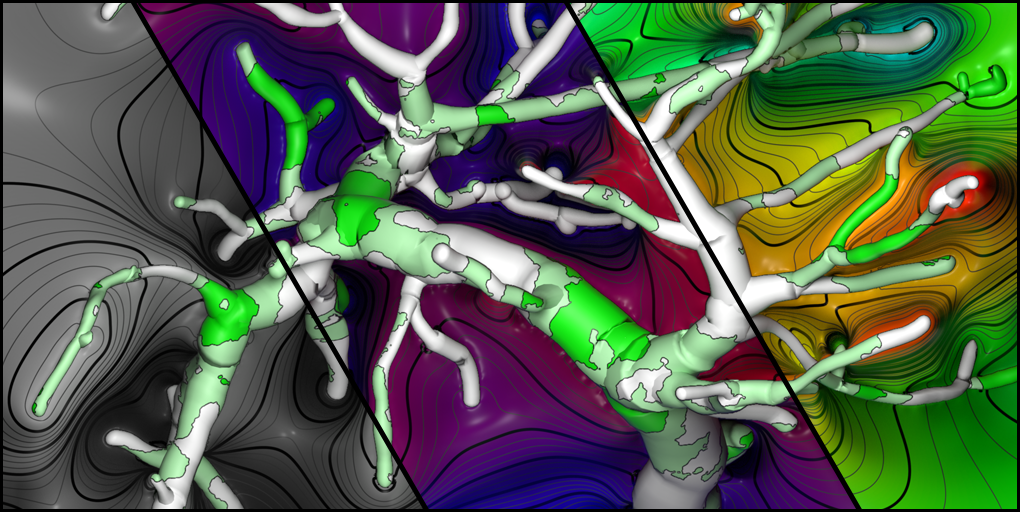Void Space Surfaces to Convey Depth in Vessel Visualizations
IEEE Transactions on Visualization and Computer Graphics (Proc. of IEEE Vizualisation and Visual Analytics) 2020
Abstract
To enhance depth perception and thus data comprehension, additional depth cues are often used in 3D visualizations of complex vascular structures. There is a variety of different approaches described in the literature, ranging from chromadepth color coding over depth of field to glyph-based encodings. Unfortunately, the majority of existing approaches suffers from the same problem: As these cues are directly applied to the geometry’s surface, the display of additional information on the vessel wall, such as other modalities or derived attributes, is impaired. To overcome this limitation we propose Void Space Surfaces which utilizes empty space in between vessel branches to communicate depth and their relative positioning. This allows us to enhance the depth perception of vascular structures without interfering with the spatial data and potentially superimposed parameter information. With this paper, we introduce Void Space Surfaces, describe their technical realization, and show their application to various vessel trees. Moreover, we report the outcome of two user studies which we have conducted in order to evaluate the perceptual impact of Void Space Surfaces compared to existing vessel visualization techniques and discuss expert feedback.
Bibtex
@article{kreiser19voidspacesurfaces,
title={Void Space Surfaces to Convey Depth in Vessel Visualizations},
author={Kreiser, Julian and Hermosilla, Pedro and Ropinski, Timo},
year={2020},
journal={IEEE Transactions on Visualization and Computer Graphics (Proc. of IEEE Vizualisation and Visual Analytics (2020))},
volume={0},
pages={1--1},
issue={0},
doi={10.1109/TVCG.2020.2993992}
}

